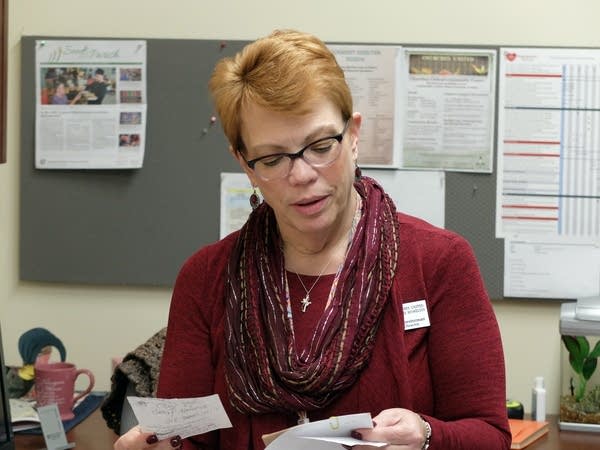Growing population of homeless seniors worries housing advocates

Pastor Sue Koesterman looks at notes in her office at Churches United for the Homeless shelter in Moorhead on Tuesday January 10th, 2017. Koesterman is executive director at the shelter.
Dan Gunderson | MPR News
Go Deeper.
Create an account or log in to save stories.
Like this?
Thanks for liking this story! We have added it to a list of your favorite stories.


